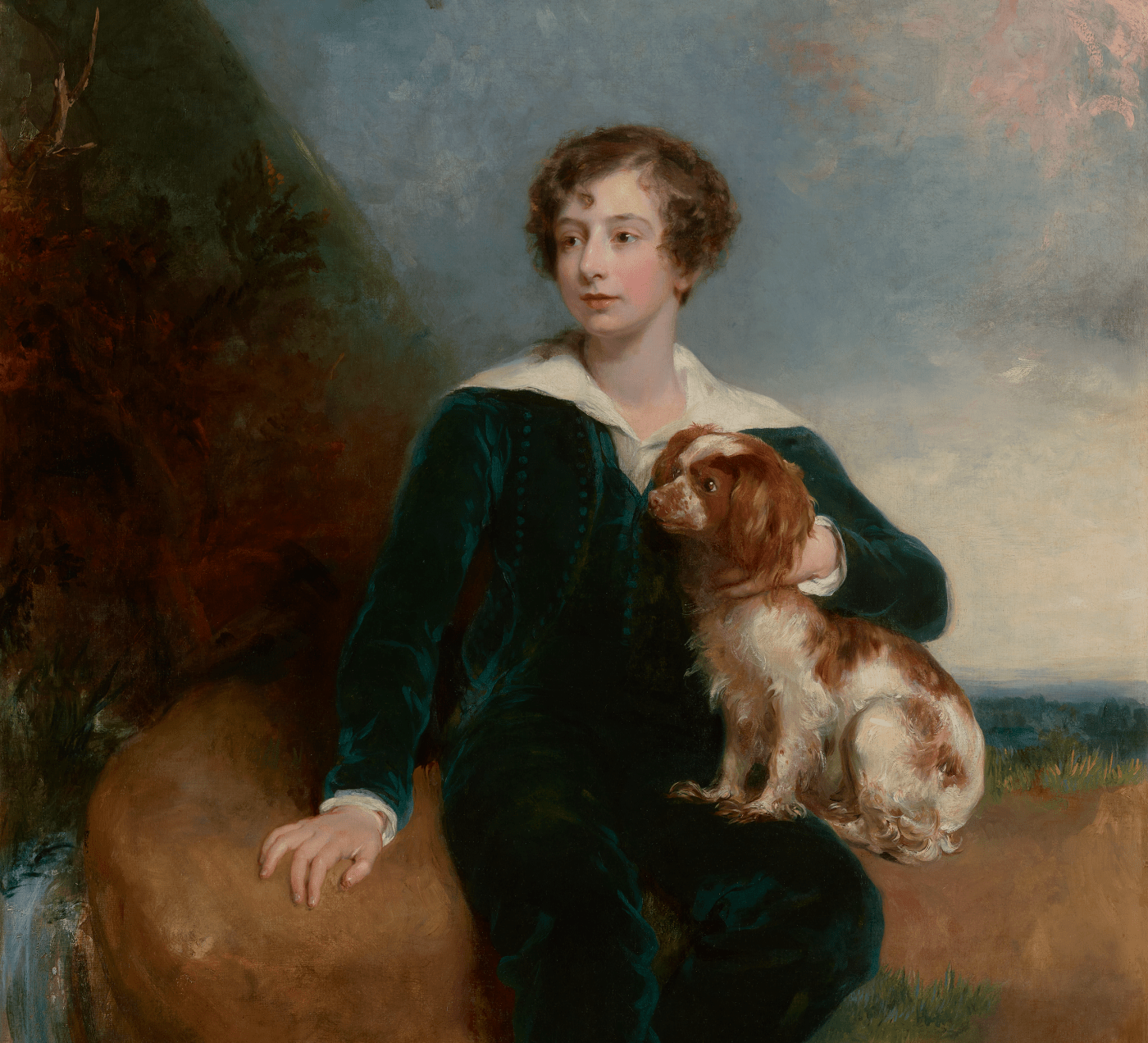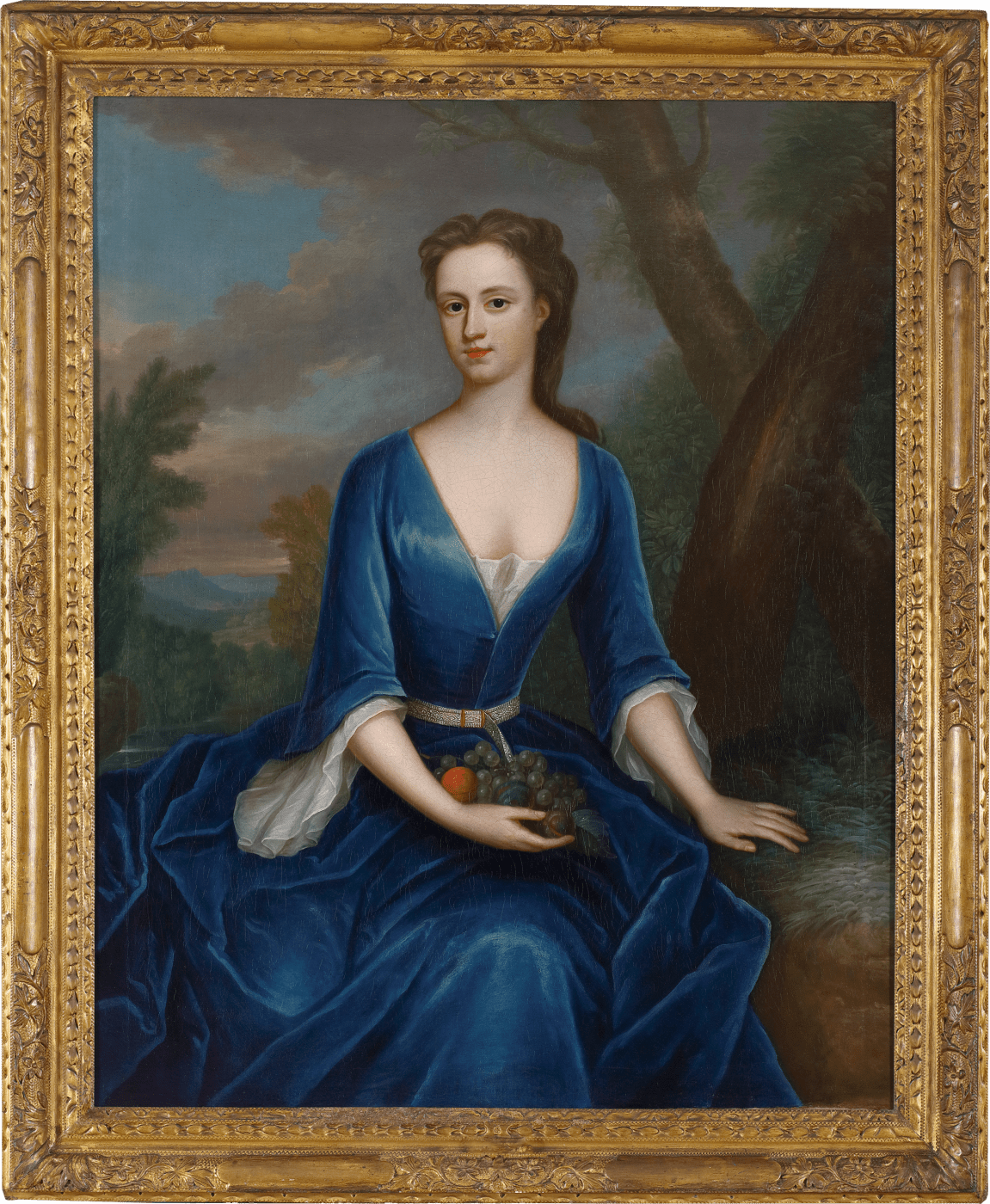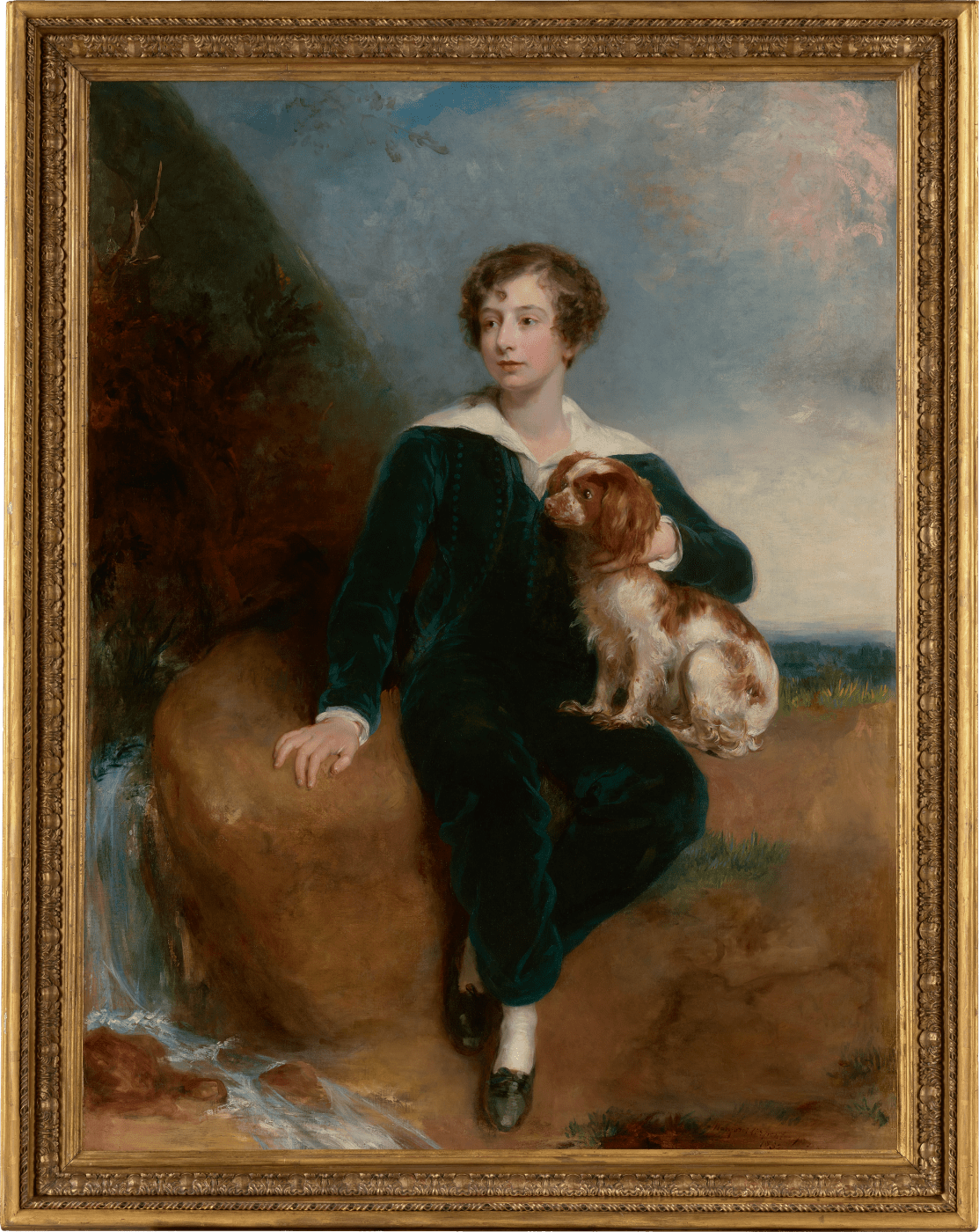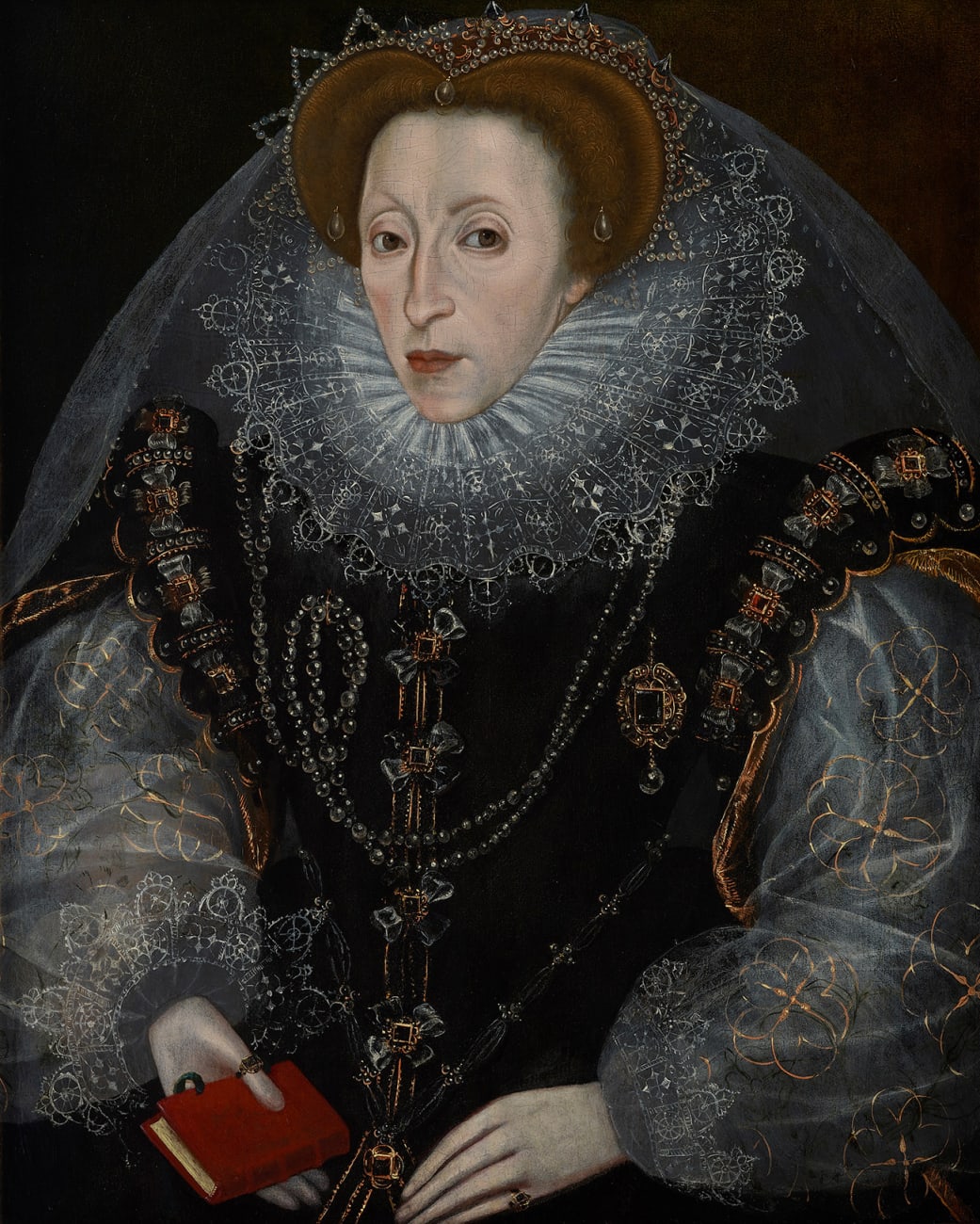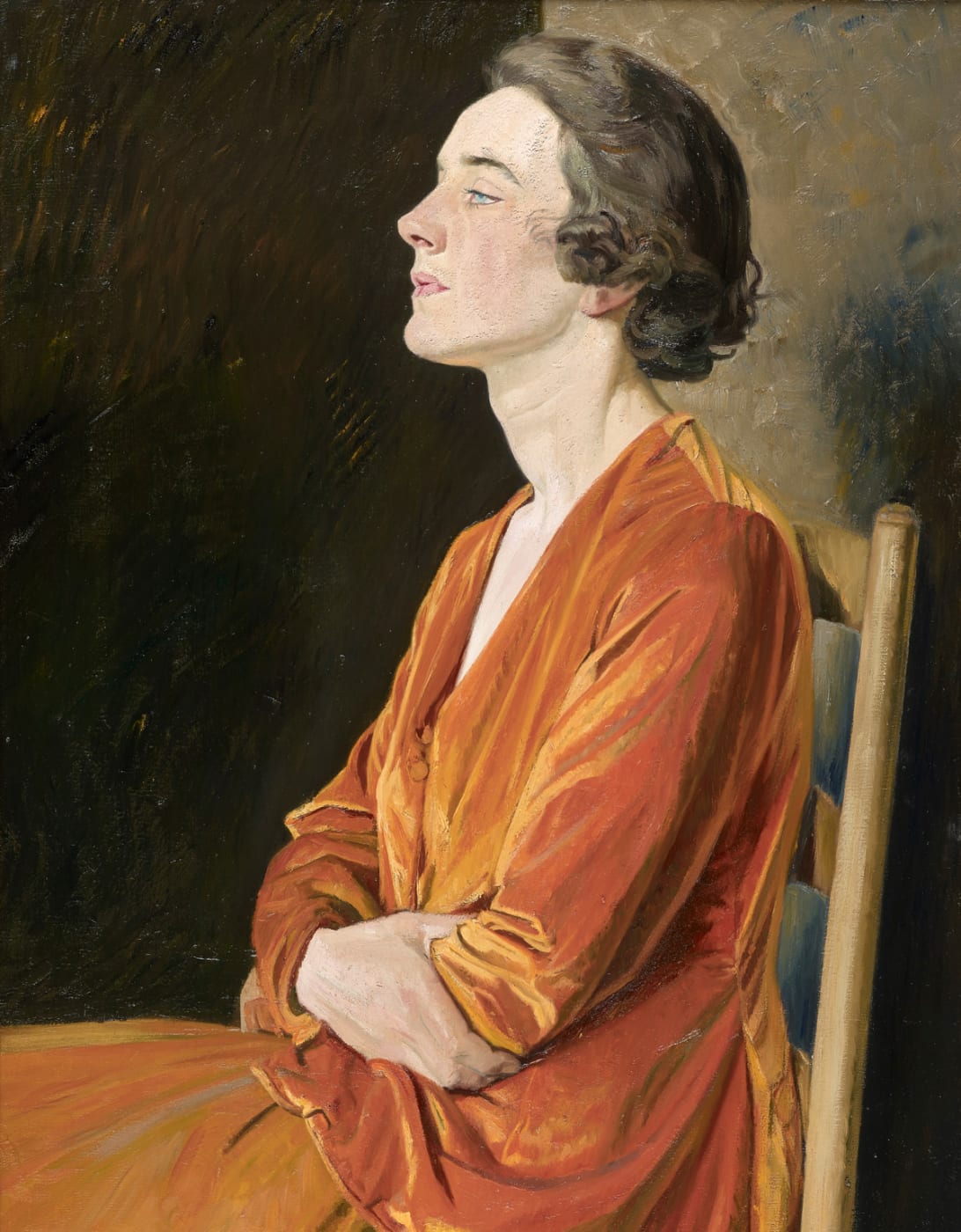Five Female Portraits Uncovered
By Valeria Vallucci
This year we have uncovered new perspectives on five remarkable women artists and their sitters, which we are excited to display at Frieze Masters. These include two of the very first professional British female artists, Joan Carlile and Mary Beale; two highly popular Romantic artists, Maria Spilsbury and Margaret Sarah Carpenter, and the multitalented scion of a well-known artistic family, Adriana Verelst.
Joan Carlile (c.1606-1679)
Portrait of a Lady, 1650s
This incredibly rare ‘sleeper’ is one of the biggest discoveries this year: one of only two portraits of ladies with Black attendants known to have been painted by Carlile. At first sight, the boy seems to be a copy of the one in Titian’s Portrait of Laura Dianti, one of 16th century Europe’s very first portraits featuring an enslaved African person. Look closer, though, and it appears to subvert black-white power relations of the time. Unlike in the Titian and her other portrait, Carlile does not show the boy performing an act of service. The stripes on his clothes echo those on her organza scarf, and rather than being just a ‘foil’, he gazes confidently at his mistress, perhaps mirroring her inner emotional state.
Mary Beale (1633-1699)
Bartholomew Beale (1656–1709), Early 1660s
Over the past thirty years, the gallery has pioneered research and identification of Beale’s works, and our special bond with her has only grown stronger since we found out she lived above our premises in Pall Mall. This work on paper was part of our exhibition Fruit of Friendship: Portraits by Mary Beale and shows the extent to which her many talents were nurtured by and embedded in a loving, supportive, and progressive network of family and friends. There is a palpable sense of intimacy and immediacy in this exquisite study of her eldest son, who would later also become an accomplished painter. The picture is part of a group of early, unfinished works from a period when, for ‘study and improvement’, Beale developed her craft by focusing on members of her immediate circle.
Adriana Verelst (c.1683-1769)
Portrait of a Lady, thought to be Cassandra Brydges, Duchess of Chandos (1670-1735), c.1710s
This portrait came to us without provenance or even the potential clue of obscure markings on the reverse. All we had was a wooden label incorrectly identifying the sitter as ‘Anne Eliza, Duchess of Chandos’. So we dived into every aspect of the Chandos family and found our portrait in a 1929 catalogue from Thornham Hall in Suffolk, where the picture had been since the late 18th century. Subsequently, we traced at least three other portraits from different Chandos-related collections featuring the same sitter. Two of these identified her as Cassandra, second wife of the first Duke of Chandos, herself an accomplished painter and a patron of the Verelst family. We are delighted to reveal that Cassandra is the most likely candidate.
Maria Spilsbury (1776-1820)
Portrait of Jane Bryan of Cong, Co. Galway, c.1814-1819
In her lifetime, Maria Spilsbury’s London studio was so popular that carriages lined up outside on private view days. Yet this portrait remained unknown until recently. This religious-sentimental artist had a talent for painting children in outdoor settings, and this unique work is evidence of her graceful and vibrant style. The sitter is an Irish country girl, Jane Bryan, seen standing in a landscape typical of Connemara. Nothing is known about her family background, but the portrait’s symbolism and its sense of serenity and prosperity suggest she was a child of the Protestant Ascendancy in Ireland, a religio-political movement in which Spilsbury and her family were deeply involved.
Margaret Sarah Carpenter (1793-1872)
Portrait of Master Brownlow Bertie-Mathew (1820-1834), 1832
We call this ‘The Green Boy’ and it is nothing short of breathtaking. Evidently influenced by Gainsborough’s The Blue Boy and Lawrence’s The Red Boy, this portrait of a Romantic child wanderer was long believed to be of Bertie Bertie-Mathew, an old Etonian lieutenant of the Hussars who was best-known for dying in Rome by falling off a horse and for being buried next to Percy Bysshe Shelley in the city’s Protestant Cemetery. But this is not Bertie. It is his younger brother Brownlow, who tragically died ten years earlier at the age of 13. Little is known about his brief life, but we have at least restored his gorgeous Byronic face and his true identity. In 1832, just after the opening of the Royal Academy exhibition, The Morning Post praised our portrait for its excellence and for being ‘an unrivalled effort, deserving of all commendation’.
